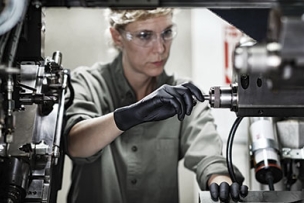MCR Safety has over forty years of experience as a leader in the field of personal protective equipment (PPE). Our assortment of offerings includes gloves, glasses, and garments which are made from the highest quality materials available to ensure maximum safety, comfort, and style.
Hurricane season for the Atlantic Ocean, Caribbean Sea and Gulf of Mexico starts June 1st and ends November 30th. The peak season always is around mid-August to late October. Hurricane Katrina and Hurricane Harvey hit in late August, and now Hurricane Dorian looks to make landfall during this period too.
Recent hurricanes have been intense, with sustained wind speeds reaching 157 mph, a category 5 level. When a hurricane's massive system strikes, those facing its destructive path and stored up energy face serious hazards: heavy rains, high winds, flooding, storm surge, and tornadoes. Once the storm has moved on, the hazards don't end. Post-cleanup workers face limitless hazards during recovery efforts from the damage caused.
This blog addresses the PPE required by workers during a hurricane's post-cleanup efforts. MCR Safety will also talk about CDC recommendations, OSHA recommendations and FEMA's guidance.
MCR Safety's Hurricane Cleanup PPE
Time is precious for those involved in restoring order after a hurricane. In addition, response activities that take place early on save lives. So, MCR is not going to waste any time highlighting the PPE worn by FEMA teams, emergency professionals, first respondents, and returning homeowners. For guidance on selecting the proper PPE, see MCR Safety's Hurricane Recovery PPE list.
MCR Safety recognizes this is a challenging time and hopes to make this an easy buying process for all those involved. Keep in mind, the above simplified list highlights some of their everyday PPE styles worn by workers. In addition to these items, their product line of safety glasses, gloves, and garments is vast. Workers may require specialized PPE for dealing with specific hazards.
Recovery disaster areas are never the same from day to day and are continuously changing during cleanup efforts. It is imperative anyone working in a hurricane disaster area performs a quick risk assessment, before starting work and wearing PPE. MCR knows this sounds easier said than done when you're facing a colossal disaster area. However, if you're encountering chemicals and only wearing general-purpose leather gloves, you're most likely going to get injured.
So, MCR Safety encourages you to stay alert and be on the lookout for hazards your current PPE isn't designed to protect against. Many times, injuries are a result of simply not wearing the correct PPE.
What jobs are needed after a hurricane?
Indeed, an employment search engine shows over 2,200 hurricane jobs available across the entire country. Many of these workers will need to wear PPE, like the options mentioned above.
Here is just a snapshot of the jobs found:
- Construction Worker
- Disaster Recovery Specialists
- Electricians
- General labor
- Hurricane Shutter Installer
- Painter
- Security
- Stucco Repair
- Window and door installer
There are countless other jobs shown on their site.
On the CDC's website, there are excellent resources for those involved in post-recovery cleanup efforts in hurricane flood zones. You will find the National Institute for Occupational Safety and Health (NIOSH) fact sheet that offers general guidance for personal protective equipment (PPE).
Here are some of the PPE they highlight:
All of these are covered in the Hurricane Recovery PPE list provided above. Here are some additional hazards where PPE is required, with MCR Safety protection pages next to each hazard.
Hurricane cleanup hazards
- Sharp jagged debris – Cut Protection
- Slippery surfaces – Grippaz™ disposable gloves
- Bacteria, bloodborne pathogens, and infectious organisms – Disposable gloves
- Cleaning agents – Chemical Protection
- Toxic substances from flooded industrial waste sites – Chemical Protection
- Being struck by tree limbs – Impact Protection
- Mold from general cleanup – DuPont™ Tyvek®
- Injuries from equipment, such as chain saws and chippers – Safety Glasses
- Floodwater – Liquid Protection
- Cleaning up debris and material handling – Cut Protection
- Flying debris, dust and fragments – Sealed Eyewear
- Pressurized washing – Pressure Washing PPE
Continue reading this blog post in its entirety for help selecting PPE from MCR Safety and disaster recovery resources from OSHA and FEMA.
Previously Featured on MCR Safety's blog.








Talk to Us!
Leave a reply
Your email address will not be published. Required fields are marked *